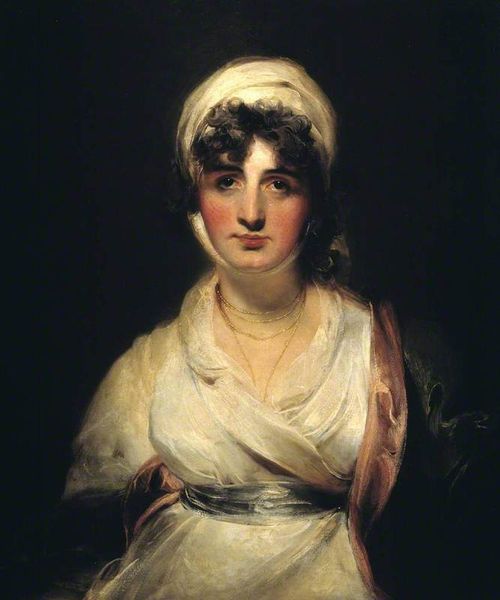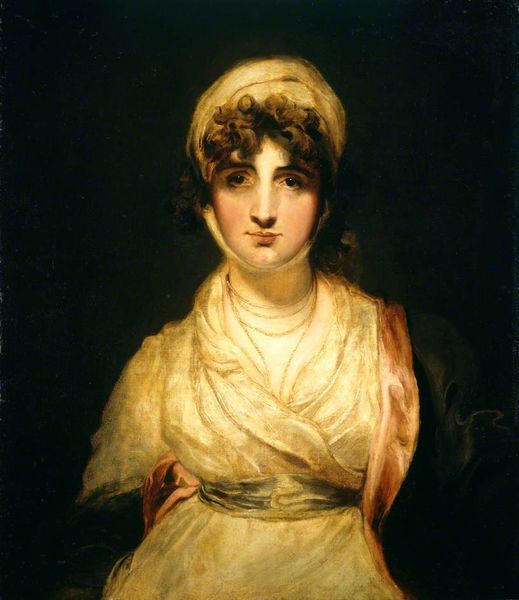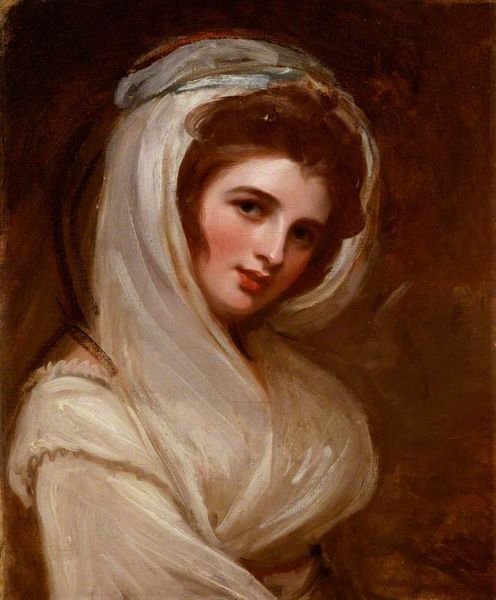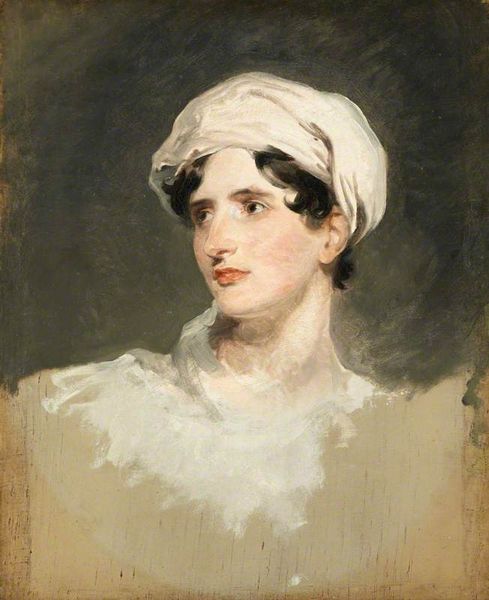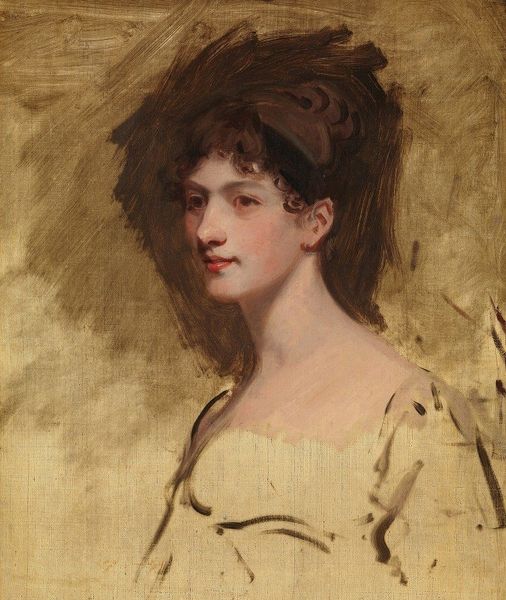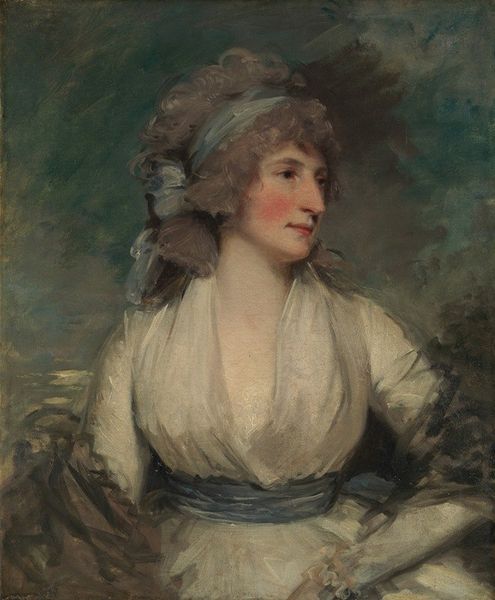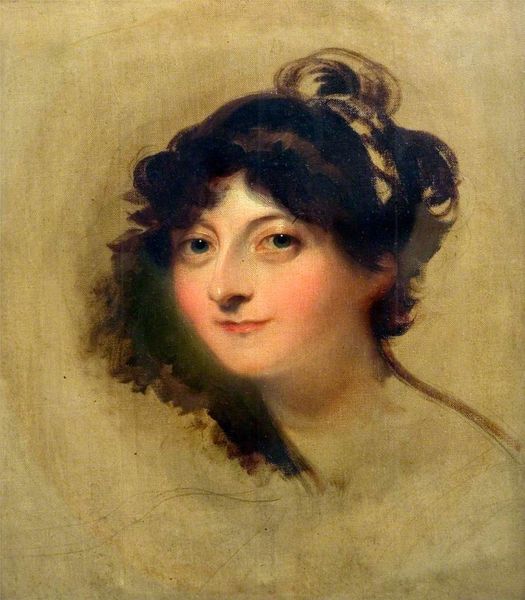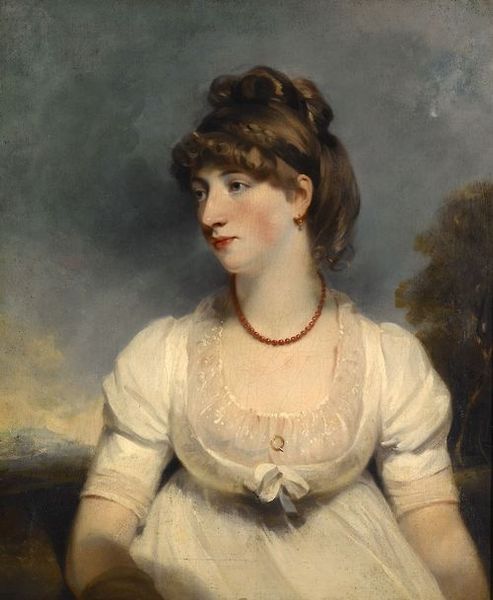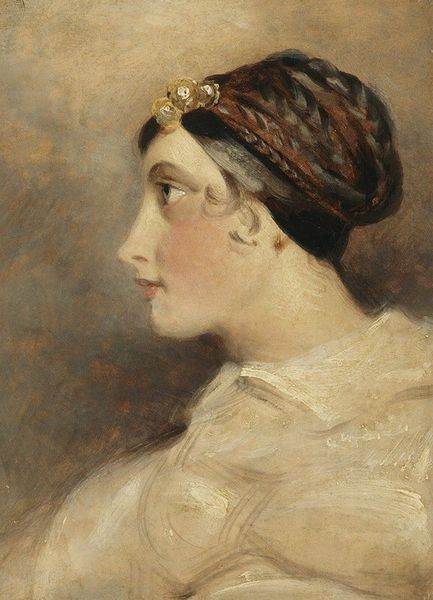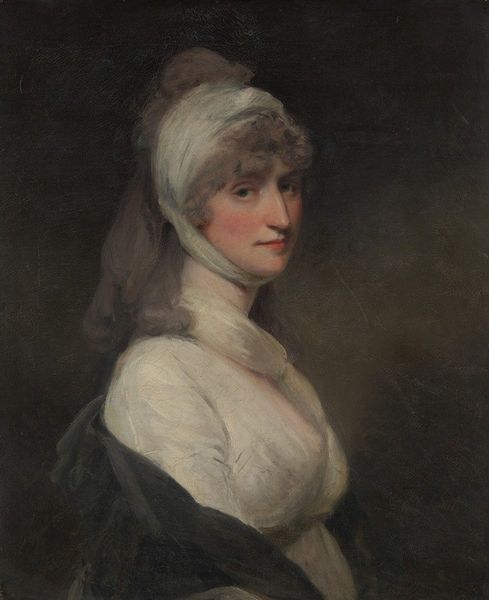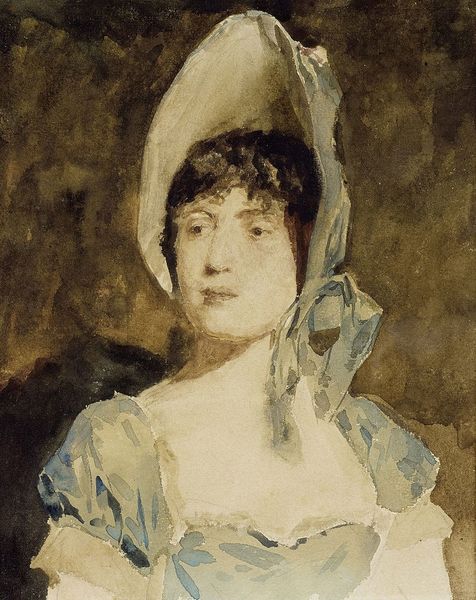
oil-paint
#
oil-paint
#
portrait reference
#
romanticism
#
history-painting
Copyright: Public domain
Editor: Here we have Thomas Lawrence's oil painting, "Mrs. Sarah Siddons", from 1800. There's a soft, almost ethereal quality to it, with the light catching the folds of her dress and head covering. What strikes you about this piece? Curator: I find myself drawn to the material reality of the oil paint itself. Look at the thick impasto in the drapery – Lawrence isn't just depicting fabric, he's showing us the very *stuff* of its making. How does that materiality influence your perception of the subject, Mrs. Siddons? Editor: Well, it definitely adds texture and depth, preventing it from becoming a flat representation. It makes me think about the process of creating the painting as much as the finished image. Curator: Exactly. The layering of paint speaks to a process of labor, a collaboration almost between artist and material. Consider also, who *was* Sarah Siddons? How did her role as a celebrated actress influence the demand and production of her portrait? Editor: I imagine being a famous actress meant having a certain status and access, leading to commissions like this. The materials then become tied to a specific economic and social structure. Curator: Precisely. Lawrence used valuable oil pigments on canvas, themselves products of industry and trade. The portrait isn’t just an image; it’s a commodity, a tangible representation of Siddons’ cultural capital. Do you see how analyzing the materiality opens up pathways for understanding the broader social context? Editor: I do. I never really considered the economic implications behind even the most basic artistic choices like the use of paint, brushes or canvas. I now have a fresh perspective on the creation of such an artwork, thank you. Curator: My pleasure. Recognizing the interconnectedness of material, labor, and social status enriches our understanding of art history.
Comments
No comments
Be the first to comment and join the conversation on the ultimate creative platform.
